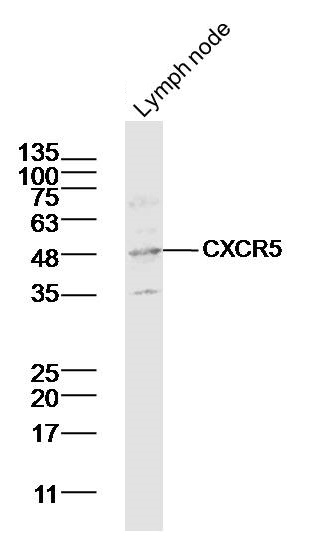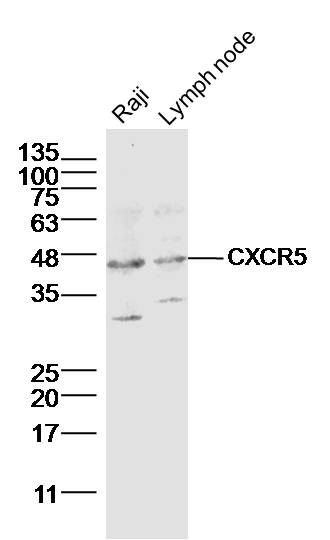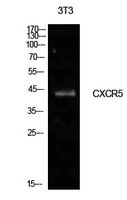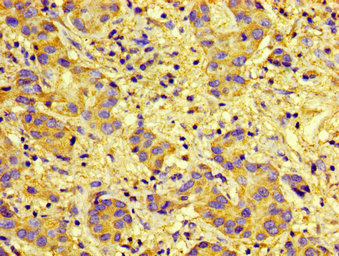
Lane 1: Mouse lymph node lysates probed with CXCR5 Polyclonal Antibody, Unconjugated (bs-3598R) at 1:300 overnight at 4˚C. Followed by a conjugated secondary antibody at 1:5000 for 90 min at 37˚C.
CXCR5 Polyclonal Antibody
BS-3598R
ApplicationsWestern Blot, ELISA, ImmunoHistoChemistry, ImmunoHistoChemistry Frozen, ImmunoHistoChemistry Paraffin
Product group Antibodies
ReactivityBovine, Human, Mouse, Porcine, Rabbit, Rat
TargetCXCR5
Overview
- SupplierBioss
- Product NameCXCR5 Polyclonal Antibody
- Delivery Days Customer16
- ApplicationsWestern Blot, ELISA, ImmunoHistoChemistry, ImmunoHistoChemistry Frozen, ImmunoHistoChemistry Paraffin
- Applications SupplierWB(1:300-5000), ELISA(1:500-1000), IHC-P(1:200-400), IHC-F(1:100-500)
- CertificationResearch Use Only
- ClonalityPolyclonal
- Concentration1 ug/ul
- ConjugateUnconjugated
- Gene ID643
- Target nameCXCR5
- Target descriptionC-X-C motif chemokine receptor 5
- Target synonymsBLR1, CD185, MDR15, C-X-C chemokine receptor type 5, Burkitt lymphoma receptor 1, GTP binding protein (chemokine (C-X-C motif) receptor 5), Burkitt lymphoma receptor 1, GTP-binding protein, CXC-R5, CXCR-5, MDR-15, chemokine (C-X-C motif) receptor 5, monocyte-derived receptor 15
- HostRabbit
- IsotypeIgG
- Protein IDP32302
- Protein NameC-X-C chemokine receptor type 5
- ReactivityBovine, Human, Mouse, Porcine, Rabbit, Rat
- Storage Instruction-20°C
- UNSPSC12352203
References
- Gong Q, Zhu Y, Pang N, et al. Increased levels of CCR7(lo)PD-1(hi) CXCR5(+) CD4(+) T cells, and associated factors Bcl-6, CXCR5, IL-21 and IL-6 contribute to repeated implantation failure. Exp Ther Med. 2017,14(6):5931-5941. doi: 10.3892/etm.2017.5334Read this paper
- Huang H, Liu Y, Wang L, et al. Age-related macular degeneration phenotypes are associated with increased tumor necrosis-alpha and subretinal immune cells in aged Cxcr5 knockout mice. PLoS One. 2017,12(3):e0173716. doi: 10.1371/journal.pone.0173716Read this paper





